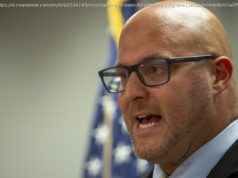Former President Barack Obama’s tweet in response to the violence in Charlottesville, VA, is making history.
Former President Barack Obama tweeted a picture and a quote in response to the violence in Charlottesville, Virginia, this weekend, and he has gotten a nearly record-setting amount of engagement from Twitter users. The first of his series of threaded tweets has accumulated about 2.6 million „likes, “ putting it in the running to become the most popular tweet of all time.
Citing Nelson Mandela, Obama wrote, „No one is born hating another person because of the color of his skin or his background or his religion … People must learn to hate, and if they can learn to hate, they can be taught to love… For love comes more naturally to the human heart than its opposite.“
Currently the record-holder is a tweet from pop star Ariana Grande who told fans that she was „broken“ after a bombing of her concert in Manchester killed at least 22 people, including some children. It has 2.7 million „likes.“
The third most-popular tweet of all time is far more lighthearted: Ellen DeGeneres‘ Oscars selfie.
Meanwhile, President Donald Trump has fumbled while using the social media platform. He retweeted and then deleted two messages on Tuesday, one that featured a cartoon train running down a character intended to represent the news network CNN and one that called the President a fascist.
Also on Tuesday, after three CEOs stepped down from their positions on his manufacturing advisory council, Trump used Twitter to accuse them of being “ grandstanders .“ Shortly after that tweet went up, a fourth CEO also stepped down.
The President has come under criticism for his overall handling of the events in Charlottesville. On Saturday, instead of criticizing racists and neo-Nazis by name, Trump referred to violence „on many sides.“ Only two days later, on Monday afternoon, did he explicitly condemn white supremacists. By then, much of the PR damage had already been done.
Don’t miss: Trump says America has ‚the highest taxes in the world’—here’s how the US actually compares






